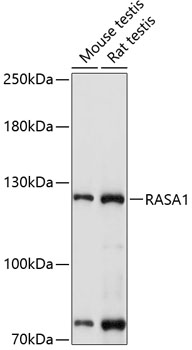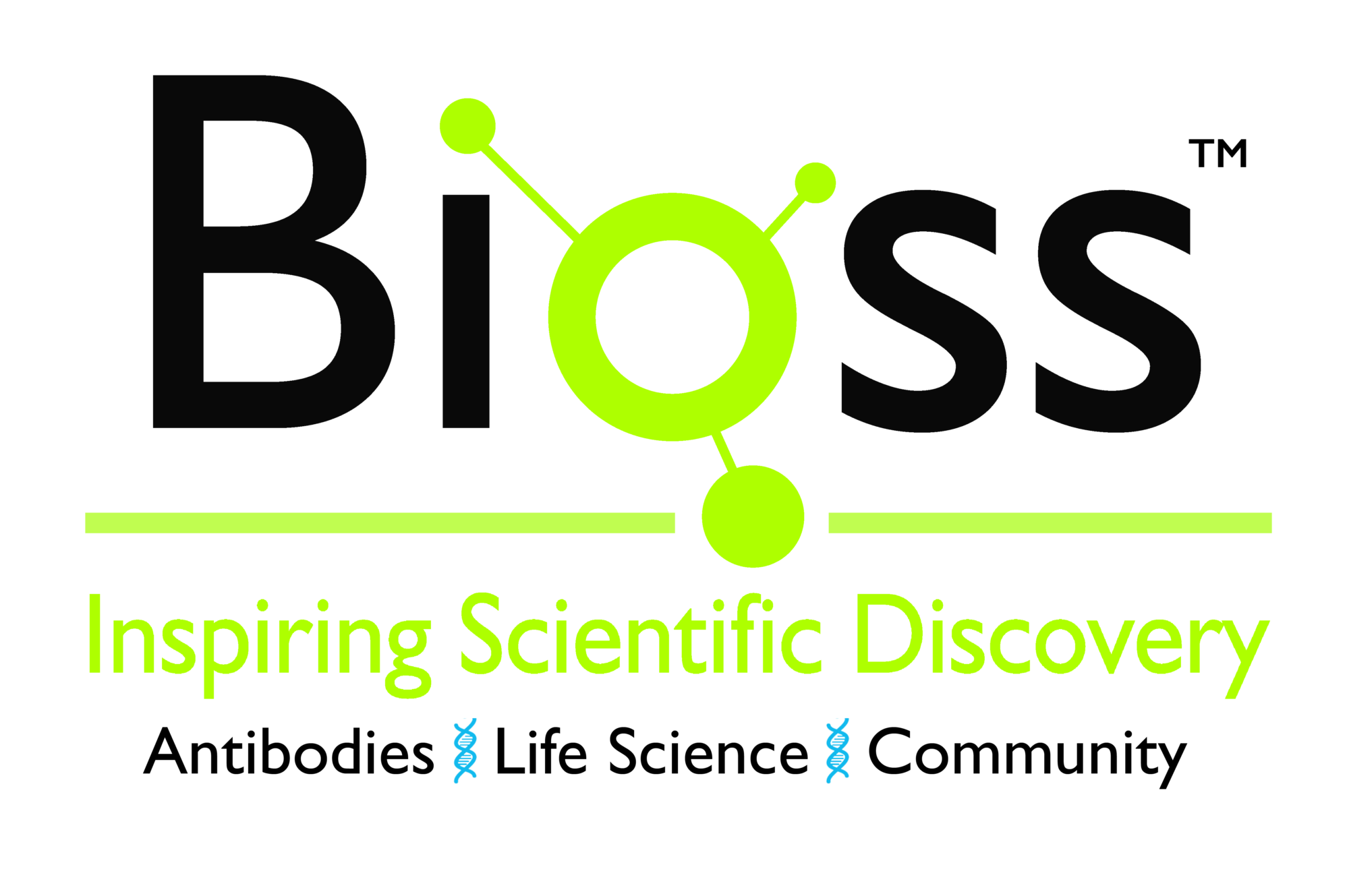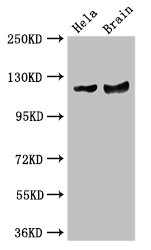![WB analysis of 25 ug of Hela (Lane 1), A431 (Lane 2), and mouse brain cell lysates (Lane 3) using GTX22922 RASA1 antibody [B4F8]. Dilution : 1:200 WB analysis of 25 ug of Hela (Lane 1), A431 (Lane 2), and mouse brain cell lysates (Lane 3) using GTX22922 RASA1 antibody [B4F8]. Dilution : 1:200](https://www.genetex.com/upload/website/prouct_img/normal/GTX22922/GTX22922_1632_WB_w_23060620_249.webp)
WB analysis of 25 ug of Hela (Lane 1), A431 (Lane 2), and mouse brain cell lysates (Lane 3) using GTX22922 RASA1 antibody [B4F8]. Dilution : 1:200
RASA1 antibody [B4F8]
GTX22922
ApplicationsImmunoFluorescence, ImmunoPrecipitation, Western Blot, ImmunoCytoChemistry
Product group Antibodies
ReactivityBovine, Human, Mouse, Primate, Rat
TargetRASA1
Overview
- SupplierGeneTex
- Product NameRASA1 antibody [B4F8]
- Delivery Days Customer9
- Application Supplier NoteWB: 10 microg/ml. ICC/IF: 5 microg/ml. IP: 1-5 microg. *Optimal dilutions/concentrations should be determined by the researcher.Not tested in other applications.
- ApplicationsImmunoFluorescence, ImmunoPrecipitation, Western Blot, ImmunoCytoChemistry
- CertificationResearch Use Only
- ClonalityMonoclonal
- Clone IDB4F8
- ConjugateUnconjugated
- Gene ID5921
- Target nameRASA1
- Target descriptionRAS p21 protein activator 1
- Target synonymsCM-AVM, CMAVM, CMAVM1, GAP, PKWS, RASA, RASGAP, p120, p120GAP, p120RASGAP, ras GTPase-activating protein 1, RAS p21 protein activator (GTPase activating protein) 1, p120 RAS GTPase activating protein, triphosphatase-activating protein
- HostMouse
- IsotypeIgG2a
- Protein IDP20936
- Protein NameRas GTPase-activating protein 1
- Scientific DescriptionThe protein encoded by this gene is located in the cytoplasm and is part of the GAP1 family of GTPase-activating proteins. The gene product stimulates the GTPase activity of normal RAS p21 but not its oncogenic counterpart. Acting as a suppressor of RAS function, the protein enhances the weak intrinsic GTPase activity of RAS proteins resulting in the inactive GDP-bound form of RAS, thereby allowing control of cellular proliferation and differentiation. Mutations leading to changes in the binding sites of either protein are associated with basal cell carcinomas. Mutations also have been associated with hereditary capillary malformations (CM) with or without arteriovenous malformations (AVM) and Parkes Weber syndrome. Alternative splicing results in two isoforms where the shorter isoform, lacking the N-terminal hydrophobic region but retaining the same activity, appears to be abundantly expressed in placental but not adult tissues. [provided by RefSeq, May 2012]
- ReactivityBovine, Human, Mouse, Primate, Rat
- Storage Instruction-20°C or -80°C,2°C to 8°C
- UNSPSC12352203

![ICC/IF analysis of A431 cells using GTX22922 RASA1 antibody [B4F8]. Cells were probed without (left) or with(right) an antibody. Green : Primary antibody Blue : Nuclei Red : Actin Fixation : Formalin Permeabilization : 0.1% Triton X-100 in TBS for 5-10 minute Dilution : 1:200 incubated overnight at 4 oC ICC/IF analysis of A431 cells using GTX22922 RASA1 antibody [B4F8]. Cells were probed without (left) or with(right) an antibody. Green : Primary antibody Blue : Nuclei Red : Actin Fixation : Formalin Permeabilization : 0.1% Triton X-100 in TBS for 5-10 minute Dilution : 1:200 incubated overnight at 4 oC](https://www.genetex.com/upload/website/prouct_img/normal/GTX22922/GTX22922_544_ICC-IF_w_23060620_596.webp)
![ICC/IF analysis of C2C12 cells using GTX22922 RASA1 antibody [B4F8]. Cells were probed without (left) or with(right) an antibody. Green : Primary antibody Blue : Nuclei Red : Actin Fixation : Formalin Permeabilization : 0.1% Triton X-100 in TBS for 5-10 minute Dilution : 1:200 incubated overnight at 4 oC ICC/IF analysis of C2C12 cells using GTX22922 RASA1 antibody [B4F8]. Cells were probed without (left) or with(right) an antibody. Green : Primary antibody Blue : Nuclei Red : Actin Fixation : Formalin Permeabilization : 0.1% Triton X-100 in TBS for 5-10 minute Dilution : 1:200 incubated overnight at 4 oC](https://www.genetex.com/upload/website/prouct_img/normal/GTX22922/GTX22922_545_ICC-IF_w_23060620_223.webp)
![ICC/IF analysis of Hela cells using GTX22922 RASA1 antibody [B4F8]. Cells were probed without (left) or with(right) an antibody. Green : Primary antibody Blue : Nuclei Red : Actin Fixation : Formalin Permeabilization : 0.1% Triton X-100 in TBS for 5-10 minute Dilution : 1:200 incubated overnight at 4 oC ICC/IF analysis of Hela cells using GTX22922 RASA1 antibody [B4F8]. Cells were probed without (left) or with(right) an antibody. Green : Primary antibody Blue : Nuclei Red : Actin Fixation : Formalin Permeabilization : 0.1% Triton X-100 in TBS for 5-10 minute Dilution : 1:200 incubated overnight at 4 oC](https://www.genetex.com/upload/website/prouct_img/normal/GTX22922/GTX22922_546_ICC-IF_w_23060620_382.webp)





